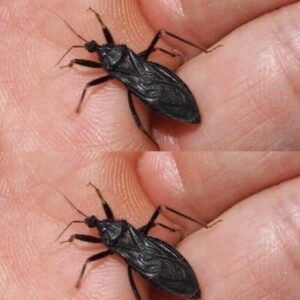Pareidolia is when the brain interprets random stimuli—like shapes, patterns, or sounds—as something significant, often a face or figure. This explains why we might see animals in clouds, faces in rock formations, or, in this case, a visage in a worn floor tile.
In the image, the rough texture of the tile outlines a face with eyes, a nose, and a mouth. The “eyes” might be darker spots, the “nose” a central smudge, and the “mouth” a faint curve. The face appears ghostly, like a hidden character peering out, waiting to be noticed.
Why Do We See Faces? – Seeing faces in inanimate objects is more common than you might think and isn’t limited to tiles or wall patterns. This tendency stems from our evolutionary need for social connection and survival. Quickly identifying faces was crucial for early humans in recognizing allies and detecting threats.





